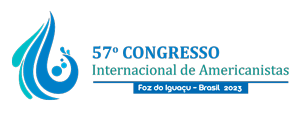| Dados do autor | |
|---|---|
| Nome | Alexander Herrera |
| E-mail do autor | Email escondido; Javascript é necessário. |
| Sua instituição | Universidad de los Andes, Colombia UniAndes |
| Sua titulação | Doctor |
| País de origem do autor | Peru |
| Dados co-autor(es) [Máximo de 2 co-autores] | |
| Proposta de Paper | |
| Área Temática | 01. Antropologia |
| Grupo Temático | El manejo del agua en los Andes : pasado, presente y futuro |
| Título | Where the Apu meets the Cocha: the role of anthropic lakes and wetlands in the vertical archipelago |
| Resumo | At the top of the Andes, in the high Cordillera Blanca, feeding relic glacial lake basins with water became a common albeit seldom documented strategy to increase water availability over the annual cycle from the late Formative Period onwards. Anthropic lakes and wetlands (cochas & bofedales or oconales) increasingly played a key part in regulating surface runoff and its sub-surface percolation, as well as in monitoring water availability in high mountain environments, especially during times of diminished or more erratic precipitation. They were also central to the constructed landscapes of many ceremonial centres in basin headwaters, both physically and symbolically. |
| Palavras-chave | |
| Palavras-chave |
|
